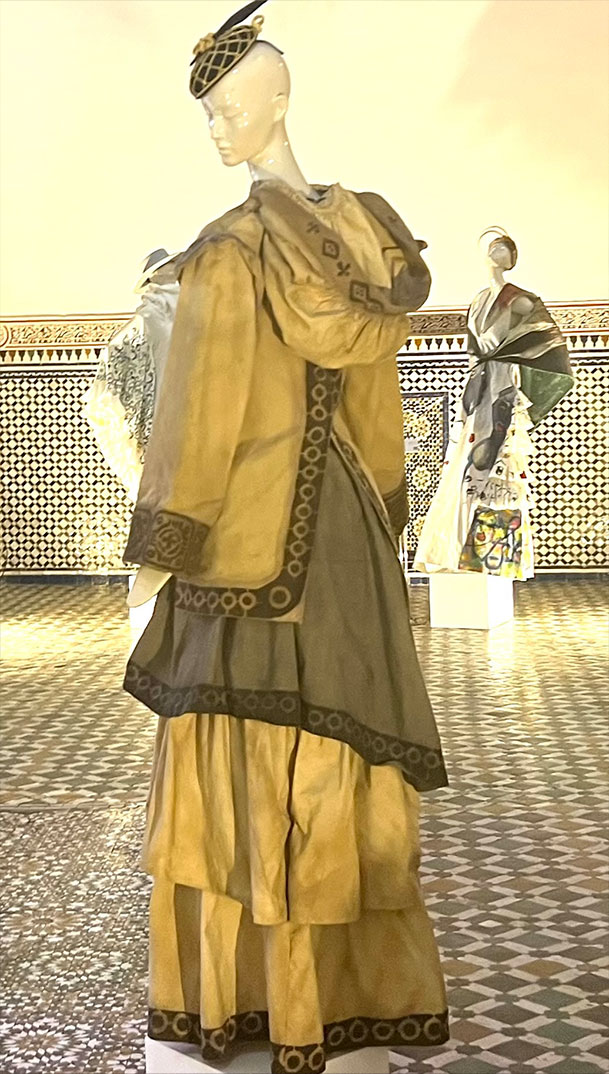FASHION ARTSPORT
IRENE LOPEZ
DE CASTRO

THE WORK
Irene López de Castro (Madrid, 1967) has a degree in Fine Arts from the Complutense University of Madrid. A painter with an international career, her exhibitions have traveled to cities such as Paris, Biarritz, Madrid, Barcelona, Venice, Milan, Verona, Syracuse, London and Seoul.
Her painting, the result of her experience of two decades of travels in India and Africa, has as its axis the Sahel and especially Mali, a country that defined her personal and professional evolution since she visited it for the first time in 1989. She is the author of the book Memories of the Niger River, the dream of Timbuktu.
The Musée National du Mali, in Bamako, hosted her exhibition Au coeur du Mali, organized by the Spanish Embassy and AECID, which a year later traveled to Florence. Her work on the Sahel and the women of Timbuktu has also been exhibited at the Museum of Fine Arts in Cordoba (2019), at the Reial Cercle Artistic in Barcelona (2020) and at Casa Árabe in Madrid (2021).
Curator of monographic exhibitions on African Art in Bogolan (mud-cloth or “mud painting”), the first of them dedicated to the Groupe Bogolan Kasobane in Valladolid and Madrid and the most recent one to women: The inheritance of bogolanfini, the legacy of the women of Mali. At Casa África, in Las Palmas de Gran Canaria.
Inspiration:
As soon as I received the model entrusted to me by Manuel Fernandez I was impressed by its design and timeless character. I thought of the costumes of the Mali hunters and Star Wars: past and future waiting for a present in the form of brushstrokes…
Art-Andalus is a collection designed for Africa, the cradle of humanity. What better than to paint it there, with African soil and plants and with a very special technique, Bogolan or “mud painting”, in which I was initiated in 1990 by my friends from Mali. Since 2019 I have been incorporating it again in my canvases, merging it with my own painting technique.
In mid-October I traveled to Bamako, in Mali, to paint this costume in collaboration with Souleymane Goro, a member of the legendary Kasobane group. They say that the Bogolan belongs to everyone. It is part of a whole culture of the land. It starts from the time the cotton is sown, picked, spun and woven, and continues with the laborious process of coloring. It is dyed with a type of vegetable dye rich in tannins, which reacts with a local iron-rich mud, darkening the dyed fabric with each stroke. The Bamanan women were the pioneers of this art, whose technique and symbology (a secret feminine language) were transmitted from generation to generation.
In this case, inspiration and technique go hand in hand. When I contemplated Manuel’s dress, freshly dyed in N’galama ochre, among all the possibilities I clearly saw a young woman’s face, between the heart and the mother’s womb, at the level of the solar plexus. A simple face, of innocence, beauty and hope. A single figurative drawing, which I then accompanied with some abstraction, in the form of bogolanfini symbols, such as the so-called Suraka taa sira (the camel’s tracks in the desert). With each washing, the clay symbols were diluted and had to be dyed and traced again. There everything costs more work, however, it retains the charm of what is slow. Our western world goes too fast. If we do not know how to wait, how can we have hope?
The practice of Bogolan is like a meditation. It invites to silence, to listening to nature. It stops the mind. Initially I had thought of drawing on the skirt figures of women washing on the banks of the Niger River, but no… The process of the work did not admit any more strokes. Despite the apparent emptiness, the ochre and gray dye filled the entire space.
It bears the name Konimba, in homage to the women teachers of the bogolanfini.
TITLE
Konimba (2022)
TECHNIQUE
Bogolan (the result of the mud). Natural dye from N'galama and mud from Mali.
INSPIRATION
Costumes of the Mali hunters and Star Wars.
LINKS

CONTINENTES
- AMÉRICA DEL SUR
- ASIA
- ÁFRICA
- EUROPA
- AMÉRICA DEL NORTE
- OCEANÍA
